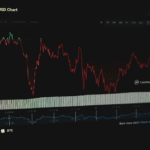
The concept of tokenomics is at the core of understanding digital assets, which include cryptocurrencies, utility tokens, and security tokens. As these assets gain traction in the financial markets, understanding the economic models that govern them becomes increasingly important. Tokenomics encompasses a wide range of factors, including the token’s supply mechanism, distribution, utility, and governance, which together shape the token’s value and market behavior. This blog will explore sentiment indicators and their effectiveness in predicting market movements.
Sentiment Indicators in Digital Asset Markets
Sentiment indicators are tools used to gauge the overall mood or sentiment of the market towards a particular asset. In traditional finance, sentiment indicators like the CBOE Volatility Index (VIX) or the American Association of Individual Investors (AAII) Sentiment Survey are commonly used. In the digital asset space, similar indicators have been developed, but with a unique twist that accounts for the decentralized and often volatile nature of the markets.
Some of the most commonly used sentiment indicators in digital asset markets include:
Social Media Activity
Platforms like Twitter, Reddit, and Telegram are hotbeds for discussions around digital assets. The frequency and tone of mentions can serve as a proxy for investor sentiment. Tools like The TIE or LunarCRUSH analyze social media data to provide sentiment scores, which can be used to predict short-term price movements.
Google Trends
Google search data can provide insight into the public’s interest in a particular asset. A spike in searches for terms like “Bitcoin” or “Ethereum” often precedes price volatility, as increased interest typically correlates with higher trading volumes.
Fear and Greed Index
This index combines various factors such as volatility, market momentum, social media activity, and surveys to provide a gauge of market sentiment. A high index value indicates greed, suggesting that the market may be overbought, while a low value indicates fear, suggesting potential buying opportunities.
On-Chain Metrics
These indicators analyze blockchain data to assess sentiment. Metrics such as active addresses, transaction volume, and the ratio of on-chain transactions to exchange transactions can provide insight into whether a token is being used or merely traded. Glassnode and IntoTheBlock are examples of platforms that provide on-chain analysis.
Effectiveness of Sentiment Indicators
The effectiveness of sentiment indicators in predicting market movements is a topic of ongoing debate among analysts and traders. While these indicators can provide valuable insights, they are not foolproof and should be used in conjunction with other forms of analysis.
Predictive Power
Sentiment indicators can be particularly effective during periods of extreme market emotions. For example, during bull markets, excessive greed often leads to overvaluation, which can be detected by sentiment indicators. Conversely, during bear markets, fear can drive prices down, creating potential buying opportunities.
Short-Term vs. Long-Term
Sentiment indicators tend to be more effective for short-term predictions. Markets driven by retail investors are often highly reactive to news and social media trends, making sentiment a powerful tool for day traders. However, long-term investors may find these indicators less useful, as they do not necessarily reflect the fundamental value of an asset.
Market Manipulation
In the relatively unregulated world of digital assets, sentiment can be easily manipulated. Coordinated efforts to pump or dump a token can skew sentiment indicators, leading to false signals. This is particularly prevalent in smaller-cap tokens with low liquidity.
Tokenomics provides a framework for understanding the economic models that govern digital assets. By analyzing factors such as supply, distribution, and utility, investors can gain insights into the potential value and risks associated with a token. Sentiment indicators, while useful, should be used cautiously, as they are often influenced by short-term market emotions and can be subject to manipulation. As the digital asset market continues to evolve, a comprehensive understanding of tokenomics and sentiment analysis will be crucial for navigating this dynamic landscape.
Step Into the Future With Kenson Investments
Unlock the potential of digital assets with Kenson Investments. By utilizing our proprietary trading methods, you can craft a robust portfolio of digital assets in the evolving world of digital assets with our blockchain and digital asset consulting and digital asset investment solutions.
Get in touch with us today!














